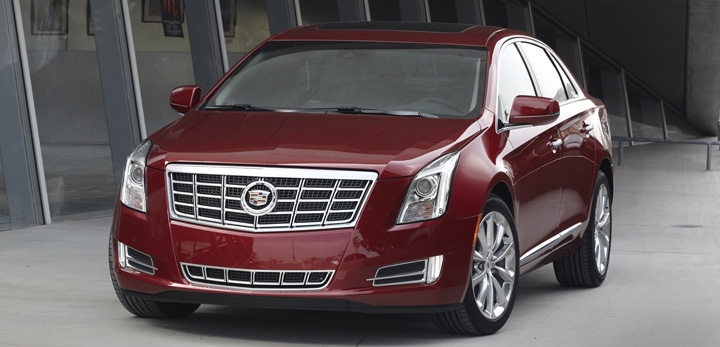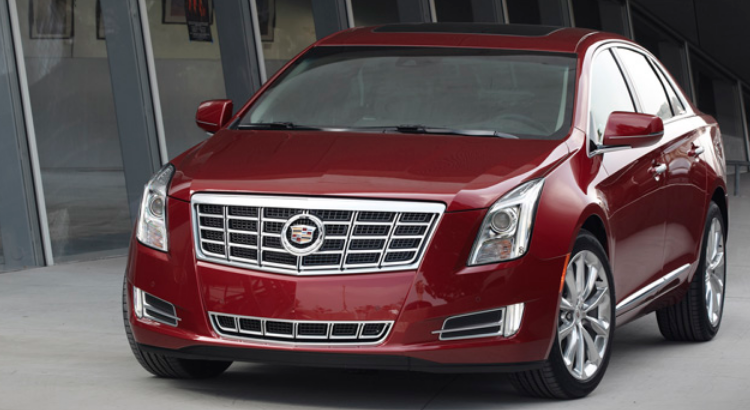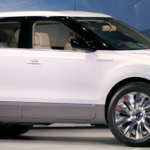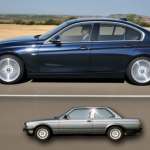
Well, sort of.
Cadillac showrooms have been devoid of a big sedan since the DTS and STS were discontinued at the end of 2011, yet the company insists that the new 2013 XTS is not their replacement. In fact, Cadillac refuses to call it “big” at all; instead, it is “right-sized.”
Cadillac Versus Hyundai: The $70,000 Battle No One Saw Coming
That seems an odd marketing move for a company that built its century-old reputation on large luxury cars. But big the XTS is, regardless of what Cadillac calls it.
While the XTS is indeed smaller than either of the models it repla . . . er . . . supercedes, its 202-inch overall length compares with other premium-large sedans, such as the Lexus LS, Lincoln MKS, and base versions of the Audi A8 and BMW 7-Series. Where it’s shorter is—oddly—in wheelbase. Its 111.7-inch span is at least four inches shy of its predecessors and most current competitors, though it’s only one inch behind the Lincoln MKS.
While wheelbase usually translates fairly directly into front and rear legroom, the XTS manages to beat all the aforementioned rivals in that regard. It also beats all but the MKS in trunk volume. Where it lags in the size wars is width. At 72.9 inches mirror-to-mirror, it is the narrowest of the bunch.
All that is reflected in interior space. It’s hard to imagine anyone short of an NBA center lacking headroom or legroom in front, and the rear seat is limousine-spacious behind any normal-size driver—but only for two. Three might fit, but unless they’re kids, they’ll overlap shoulders.
Among premium-large cars, only the new XTS and the Lincoln MKS are front-wheel drive; all the others are either rear drive or all-wheel drive. Note that both the XTS and MKS are also offered with all-wheel drive, which seems to be of growing acceptance in this class. The only powertrain offered in the XTS is a 304-horsepower 3.6-liter V6 mated to a 6-speed automatic transmission.
One area in which the XTS stands out among class rivals is in its dashboard design—not only in the control layout, but also in the instrument display. While most competitors have gone to complicated joystick controls and/or a plethora of buttons to manage the ever-increasing number of electronic interfaces a luxury car is expected to have, the XTS looks to cell-phone technology to make things more “logical”—at least to those familiar with an iPhone or iPad. If you’re using a Jitterbug, you’re going to be lost.
There are very few buttons and no joysticks in the control layout. Instead, most commands are entered through an 8-inch screen featuring, in Cadillac’s words, “capacitive-touch control with proximity sensing, haptic feedback, gesture recognition, and natural voice recognition.” If all that sounds like gibberish to you (and some of it did to me, or I wouldn’t be quoting Cadillac), ask a 10-year-old to explain it.
It’s all part of what Cadillac calls “CUE”—for Cadillac User Experience. The bottom line is that while I’d certainly prefer normal buttons and knobs for basic audio and climate functions, a brief overview from a Cadillac engineer was enough to tune me in to the “logic” of the system. The question will be whether dealerships can lavish would-be buyers with the same degree of attention.
Then there are the “instruments.” Regardless of trim level, all are digitally imposed on a black background. On the base model, they’re mixed with mechanical needles in some cases, but the images and information provided are still changeable to some extent. In higher-line trim levels, the driver can choose from multiple layouts that run the gamut from simple (little more than a digital speedometer and fuel gauge) to quite colorful and informative, and a head-up display is also offered. Those who cut their teeth on video games might be enticed by the multitude of colors and configurations, while those who equate such digi-graphics with . . . well . . . cheap video games will likely look askance at such tomfoolery.
Either way, if you need to look up any information in the owner’s manual, you won’t find it. That is, you won’t find the manual. Because there isn’t one. Instead, every XTS comes with an iPad loaded with instructions.
Clearly, Cadillac is trying to shed its “old man’s car” image with the XTS, something it managed to go a long way toward doing with the sporty, midsize CTS. Whether this younger breed of customer can come up with the $45,000 ante of the base model or the $60,000 it takes to buy the top-line model—and whether he or she chooses to spend that money on a Cadillac—remains to be seen. It’s a risk, to be sure, as much of the high-tech gadgetry may confound the, let’s say, “more mature folks” who expected to trade in their DTS for a similar car, and they’re likely to flee elsewhere. Because for better or worse, this is so not your grandfather’s Cadillac.



